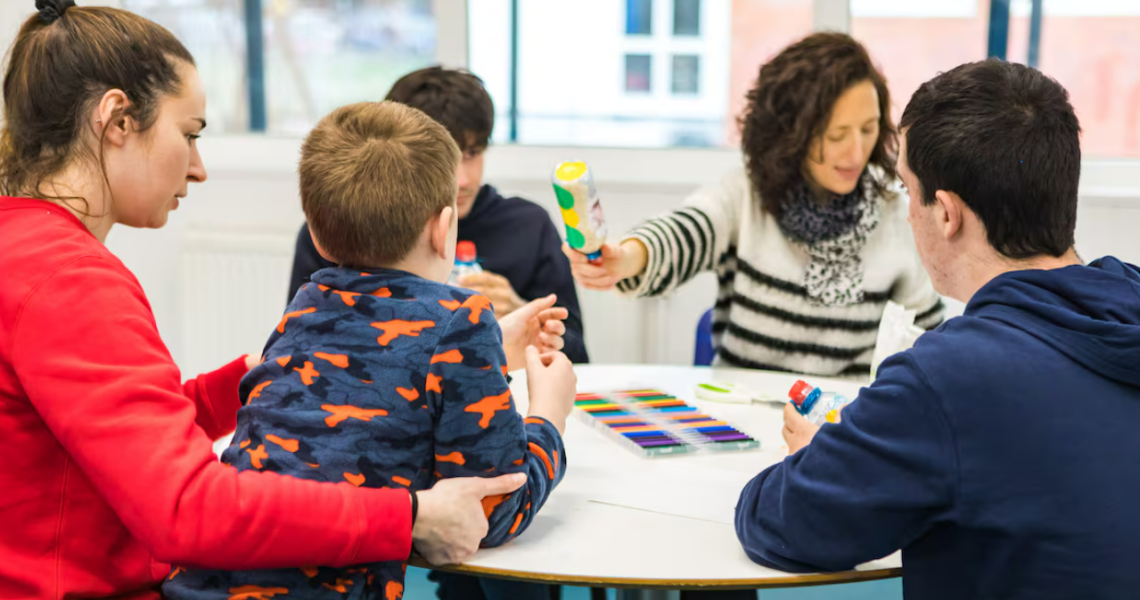What Can Parents Do After an Autism Diagnosis?Five Essential Tips for Families with a Child on the Autism Spectrum
When parents receive an autism diagnosis for their child, it can bring both clarity and emotional turmoil. As Ana Leza, a mother from Madrid, shares, “The diagnosis of autism for our son Lucas came when he was 20 months old. Although having a name for what we were observing brought some relief, it still felt like a bucket of cold water — not just for us but for the entire family.” Like many other parents, she faced not only emotional challenges but also confusion and a lack of resources.
With autism affecting approximately 1 in every 100 individuals, according to data from Autismo España, it’s increasingly important to provide families with guidance to navigate this new reality. María Verde, a research specialist at Autismo España, outlines five key areas that can help parents adapt and support their child’s development, emotional well-being, education, and family life.
1. Early Intervention: Acting as Soon as Possible
Early intervention is one of the most crucial factors in enhancing the communicative, social, cognitive, and emotional development of children with autism, particularly between the ages of 0 and 6. Verde advises families to seek an evaluation through public or partnered early intervention services as soon as possible. “The sooner early intervention begins, the better the child’s future development will be,” she emphasizes.
Leza also highlights this need: “What we missed the most after the diagnosis was having access to information about public resources and support programs.”
2. Education: Exploring All Schooling Options
Selecting the right educational path is a critical step. Verde encourages families to explore every available option — whether it’s mainstream education with support services, special education programs, or hybrid models. Once a decision is made, it’s vital for parents to actively participate in discussions with the educational team to ensure their child’s needs are met.
Additionally, families should request a psychoeducational evaluation to ensure that the support measures are properly tailored to their child. To aid educators, organizations like Autismo España and Fundación Gmp offer free training courses, such as Inclusive Education for Students with Autism, which equip teachers and staff with effective tools and strategies for working with autistic children.
3. Home Environment: Creating Structure and Predictability
Navigating life at home with a child on the spectrum presents unique challenges. “Knowing what works best for your child can make daily life a little easier,” says Leza. Verde agrees: “Children with autism often thrive in well-structured environments with clear routines and advance notice of upcoming events.”
Visual supports like pictograms, calendars, and home schedules can help promote autonomy and improve daily communication. Establishing consistency and predictability helps reduce anxiety and fosters a sense of security.
4. Leisure and Free Time: Meaningful and Inclusive Activities
When it comes to leisure, Verde explains that children with autism enjoy many of the same activities as neurotypical children — the key is adapting these experiences to suit their preferences and sensitivities. Activities should be meaningful and inclusive, providing opportunities for socialization and enjoyment within the broader community.
Leza’s family has become proactive in seeking out autism-friendly options: “We always research leisure activities that suit Lucas — from venues with reduced noise and lighting to specialized libraries, summer camps with trained staff, and adapted sports centers. But sometimes, finding this information isn’t easy, as these initiatives aren’t always widely advertised.”
5. Support Networks: Finding Community and Emotional Support
Autismo España connects nearly 200 organizations across the country that work to improve the quality of life for individuals with autism and their families. In addition to these organizations, there are numerous independent support groups, online communities, sports clubs, and family networks that offer invaluable emotional and practical support.
Verde explains, “Being part of a support network can provide emotional reassurance, access to valuable resources, and a sense of community, which is crucial during the journey of understanding and acceptance after diagnosis.” Leza echoes this sentiment: “For us, parent support groups have been essential. They have offered companionship and led us to resources, activities, and information we might never have found otherwise.”
She adds, “Having a child with autism is like walking a long and ever-changing road. But because no two days are the same, that road can also be incredibly beautiful.”
